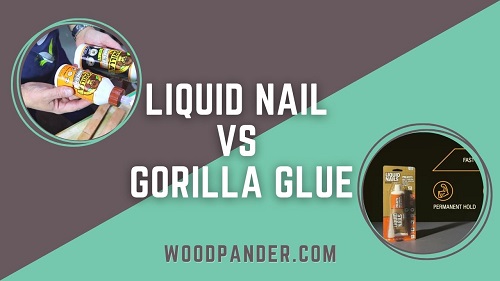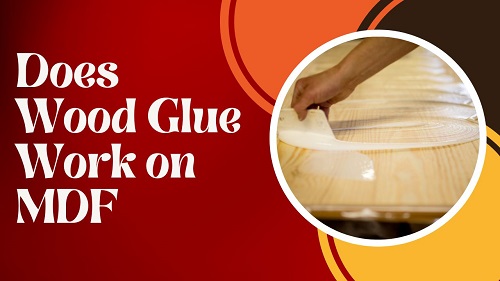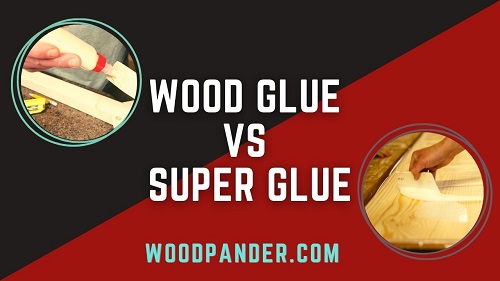Adhesive is more or less your daily necessity, especially when you’re working professionally. You might get confused between wood glue vs construction adhesive and wonder if they are both the same thing or not.
So which one should you choose, wood glue vs construction adhesive?
The primary difference between wood glue and construction adhesive is that wood glue is used for joining wooden materials and construction adhesive is used for heavy-duty joints with different materials. Though both have certain differences, they’re the best in their respective field.
However, this is only the tip of the iceberg. If you want to learn more comparisons of both adhesives before making a decision, keep scrolling!
Comparison Table Between Wood Glue Vs Construction Adhesive
If you’re running out of time, and want a quick overview to understand the differences between both the adhesives, take a look at this quick comparison table.
| Comparison Factor | Wood Glue | Construction Adhesive |
| Application | Porous surfaces | Non-porous surfaces |
| Resistivity | Comparatively low | Comparatively high |
| Drying Time | Fast | Slow |
| Cleaning | Easy | Hard |
| Safety | Non-toxic | Toxic |
What Is Wood Glue?

Wood glue is also called carpenter’s glue. It’s a type of adhesive that’s primarily used for joining pieces of wood together. This glue is formulated to penetrate wood fibers, and make strong adhesive joints. Most wood glues do not only work for woods, they can be used on different materials.
Pros
- Works great on versatile materials
- Easy to dispense and use
- Offer superior bondage
- Get clear after drying
- Worth value for money
Cons
- Might have chemical fumes
Here is a recommended list of products for the Best Wood Glue:
Best Construction Glue: Gorilla Original Gorilla Glue (Buy Now)
Best Wood Glue for Cabinets: Elmer’s Carpenter’s Wood Glue (Buy Now)
What Is Construction Adhesive?
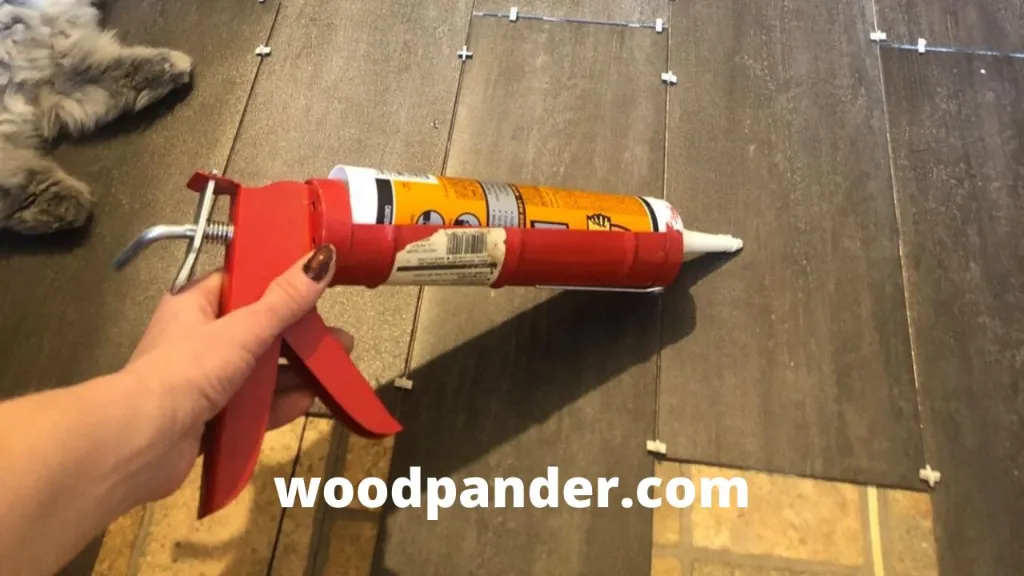
Construction adhesive is the general-purpose adhesive that is mostly used for attaching and fixing different materials such as drywall, tile, ceiling, floor, etc. This adhesive commonly comes in a tube package so that you can use it with a caulking gun.
Pros
- Works on almost every material and surfaces
- Very strong for almost permanent bond adhesion
- Right consistency enables quick and easy use
- All-weather suitability
- Great outdoor adhesive
Cons
- A bit pricey
Here is a recommended list of products for the Best Construction Adhesive:
Best Adhesive for Wood: Titebond Original Wood Glue (Buy Now)
Best Construction Adhesive: Gorilla Construction Adhesive (Buy Now)
Best Construction Adhesive for Wood: Liquid Nails LN907 Construction Adhesive (Buy Now)
Best Exterior Construction Adhesive: Liquid Nails LN905 Adhesive (Buy Now)
Details Comparison Between Wood Glue VS Construction Adhesive
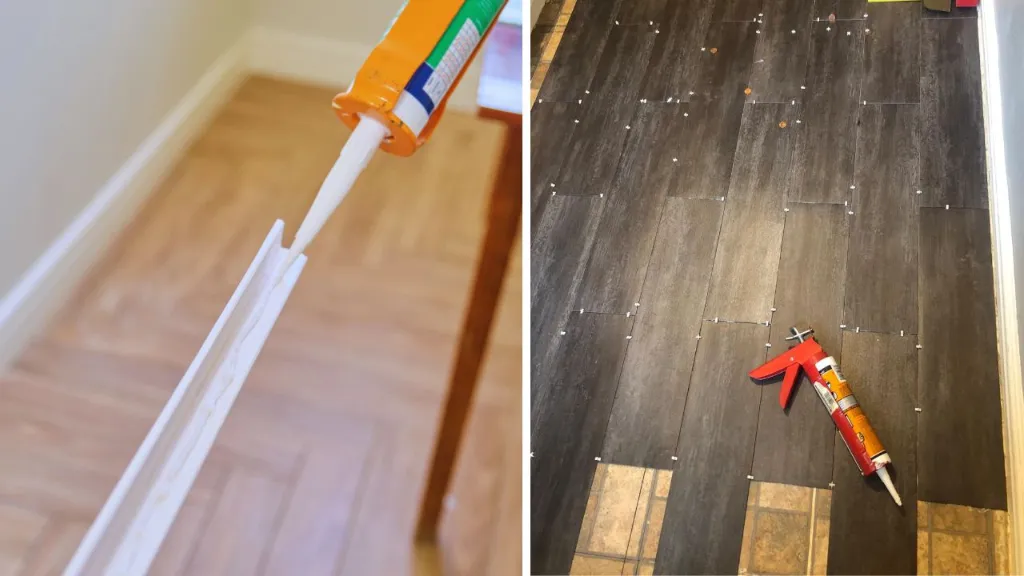
You might be glad to know that the two adhesives can be interchangeable occasionally for certain purposes. In some situations, the substitutions may be viable. But in some serious cases, they shouldn’t substitute each other.
As you’ve got a basic idea about both adhesives, now we’re going to cover in-depth comparison. So that you can learn more about their specific differences and select the better one to fulfill your requirements.
1. Durability
The durability of an adhesive indicates how effectively it will create an adhesive bond. The more strong and durable the adhere, the better it will last longer.
- Wood Glue
Wood glue usually comes with thin formation, so it’s best to use on bare woods. It is even stronger than wood that once they dried properly, you can’t ever separate it.
- Construction Adhesive
Construction adhesive is too thick. It won’t be as hard as wood glue after drying so it is prone to separation under pressure.
Winner: Wood Glue
2. Application
Deciding which adhesive is better for you, mostly depends on the types of application. It’s not necessary that for the application you’re using wood glue, construction adhesive should be good for that too. So before you pick one, find out which types of application you do and whether the adhesive is suitable for that.
- Wood Glue
The application of wood glue is most commonly seen in joining wooden materials. You can use this glue for cabinets and woodworking too. Plus, the wood glue is also applicable for laminating two pieces of wood together. You can install trim or molding on any bare wood project. On top, wood glue is also widely used for craft projects and decorations.
These glues are highly used for joining wood with other porous surfaces. Along with wood, It can be used on
- Plastic & PVC
- Glass, Metal
- Tile
- Ceramic
- Concrete
- Fiberglass
- Automotive
- Cloth/Carpet and more.
- Construction Adhesive
In general, construction adhesive is not appropriate for woodworking applications. Though it is amazing for other applications if you want to use adhesive on non-porous surfaces.
This adhesive works great for the wood or drywall that has previously been painted or finished. You can alternatively use construction adhesive as a filling to fill the small gaps in the joints. However, the construction adhesive is mostly compatible with
- Wood
- Drywall
- Paneling
- Concrete
- Composites
- Block
- Plastic
- Ceramic
- Tile
- Trim & molding and more.
Winner: Draw
3. Drying Time
If you’re in a hurry, you want a glue that works fast. But in case you’ve enough time in your hand, you can opt out of the adhesive that may slowly dry. We recommend considering the time of drying you can give the adhesive. After that, choose one suitable for you.
- Wood Glue
If you’re finding a fast-drying adhesive, we must mention wood glue. It takes comparatively very less time than other adhesives. Based on the application types, wood glue sets within 5 minutes and can dry within an hour. Sometimes, it can take a maximum of two hours to completely dry. But, it is best to let the glues dry overnight.
- Construction Adhesive
Unfortunately, construction adhesive is not as quick as wood glue in drying. Usually, it takes around 24 hours to completely dry. After applying the adhesive, press the surface together and hold for 20-60 seconds within 10 minutes.
Winner: Wood Glue
4. Resistivity
Undoubtedly, resistivity is the most crucial factor in choosing any adhesive. Because you don’t want to spend on such glue that failed to deliver enough resistance.
- Wood Glue
Wood glue has quite good resistivity, though it is ideal for wooden bindings. If you only use the wood glue for joining wooden materials, nothing can beat it. This glue comes with great resistivity to join versatile woods, such as purple heart wood, pine wood, or mahogany wood.
- Construction Adhesive
Thankfully, construction adhesive is superior in terms of resistivity. It has more resistive ability than wood glue and is successfully used for clamping things.
It’s also a great substitute for wood glue as it’s highly efficient to adhere to slick surfaces. On top, due to its high resistivity and waterproof resistance, you can apply the construction adhesive on the moisturizing surface such as subfloor to floor joists.
Winner: Construction Adhesive
5. Types Of Surfaces
Both the adhesives work differently on certain types of surfaces. So consider, on which types of surfaces you’re going to use the glue.
- Wood Glue
Wood glue doesn’t work properly on irregular surfaces. It requires two tight contact surfaces to give the best result.
- Construction Adhesive
Construction adhesive is good at bonding almost every material compared to lamination or woodworking joints. It is easily able to fill larger gaps. You can use it anywhere whether wood or non-wood tends to expand, flex or contact. With thicker consistency, construction adhesive effectively fills gaps between two surfaces while retaining its grip.
Winner: Construction Adhesive
6. Cleaning Up
While working with the adhesive, it’s very common to stick adhesives with your uncovered skin. In that case, you need to clean it. Unfortunately, our annoying personal experience says that removing and cleaning adhesives is a very lengthy and hard process. So if you’re doing a certain type of work, where there is a high chance your skin could get exposed to the adhesive, you should look for one that is easily cleanable.
- Wood Glue
Thankfully, wood glue is easy to clean up. Nothing but only using soap and water will be enough for cleaning the wood glue.
- Construction Adhesive
On the contrary, construction adhesive is quite troublesome to remove. You will need to use oil or petroleum jellies with soap and water for cleaning up the construction adhesive. Though make sure to mix the oil you’re using in the proper ratio.
Winner: Wood Glue
7. Safety Factor
Adhesives generally contain chemicals and thus you might be conscious of the safety factor.
- Wood Glue
When it comes to safety, wood glue is the safest option compared to construction adhesive. It is also good to go even to areas where there is not enough ventilation as it does not tend to catch fire.
- Construction Adhesive
On the other hand, as construction adhesive uses chemicals, it can be toxic at times. Sometimes it can also catch fire if not dried completely. So, make sure you’re using the adhesive in a properly ventilated area.
Winner: Wood Glue
Tips: If you have to use construction adhesive, you can always put on a safety suit and helmet to ensure your safety and protection.
Wood Glue Vs. Construction Adhesive: Which One Is Better?
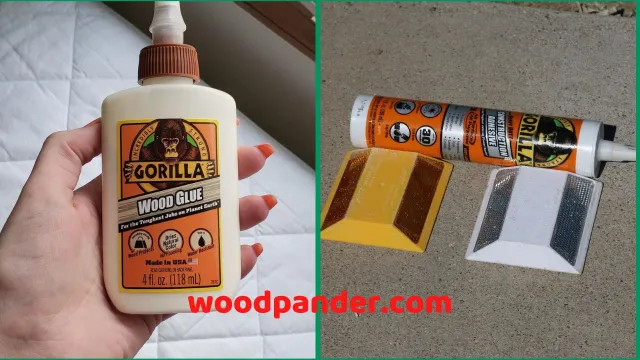
When comparing wood glue and construction adhesive, the question of which is stronger ultimately depends on your specific application and materials being bonded.
It’s hard to say, between wood glue vs construction adhesive, which one is better than the other. Basically, the winner depends on your requirements and purposes.
If you’re only finding the adhesive for wood, then wood glue is better to use. You can try JB Weld wood glue for general household repair, automotive or marine repair, agricultural equipment, or even for motorcycles and truck repair.
On the other hand, if you’re working with processed wooden materials or virtually other materials including landscaping, mirror, bath surrounds, foam board, marble, etc, Gorilla Heavy Duty construction adhesive will be better for you.
Conclusion
Wood glues and construction adhesives both have their advantages and drawbacks. They are best in specific areas and obviously you won’t need an all-rounder.
Hopefully, this article will help you to understand the main differences between them. So, carefully choose your essential one. If you have any thoughts in mind, feel free to share them with us in the comments.
Good luck!
Related Questions
How does wood glue work?
Wood glue, also known as PVA (polyvinyl acetate) glue, works by creating a strong bond between pieces of wood. When the glue is applied, it penetrates the wood's porous surface and forms a bond as it dries, creating a strong adhesive connection.
Is construction adhesive applicable to painted wood?
Yes, you can apply construction adhesive over the painted wood. In fact, you'll be glad to know that the construction adhesive sticks better than wood glue in painted wood at times.
Is wood glue strong?
Wood glue can provide a strong bond for woodworking projects. The strength of the bond depends on factors like the type of wood, the quality of the glue, and the joint's preparation. Properly applied wood glue can create a durable and reliable connection.
Is Liquid Nails stronger than wood glue?
Liquid Nails and similar construction adhesives are often stronger than traditional wood glue. They are designed for a variety of materials and can be more versatile for different applications, including bonding wood. The specific strength depends on the product and the intended use.
Is construction adhesive strong?
Construction adhesive, like Liquid Nails, is typically strong and versatile. These adhesives are designed for various construction materials, making them suitable for bonding wood and other substrates. The strength may vary between different formulations and brands, so it's essential to choose the right one for your specific project.
What is construction adhesive used for?
Construction adhesive is used for attaching tile, drywall, molding, and fixtures to ceilings, walls, and floors. Otherwise, you can fill small gaps using construction adhesive.
Which one is the strongest wood glue?
If you're looking for the strongest wood glue, consider buying polyurethane-based glues. You can check out Gorilla wood glue which is one of the best polyurethane-based glue.
Wood or wood glue which one is stronger?
Surprisingly, wood glue is stronger than wood. Where the wood glue can withstand 3000 PSI (pound per square inch) force, their wood can absorb 1000 PSI force.

